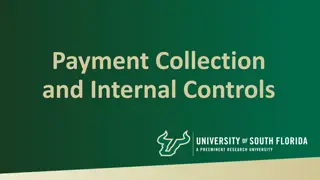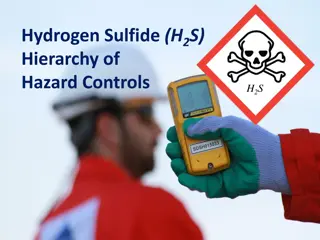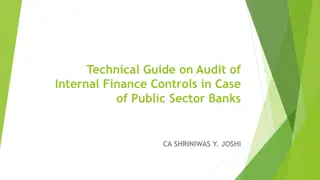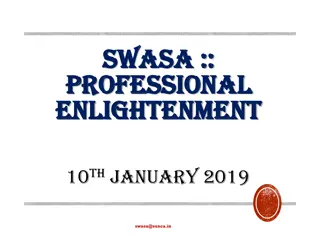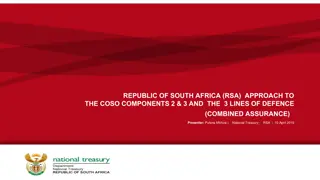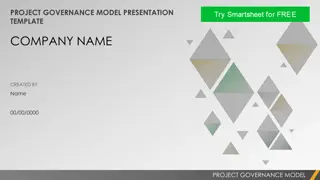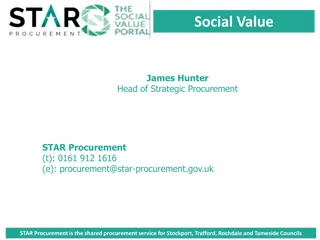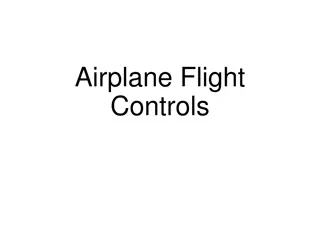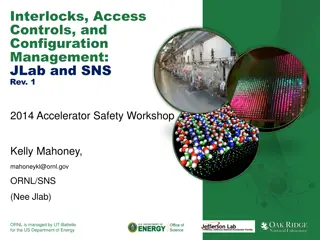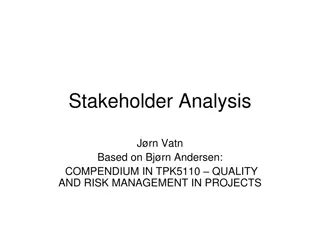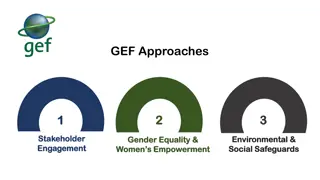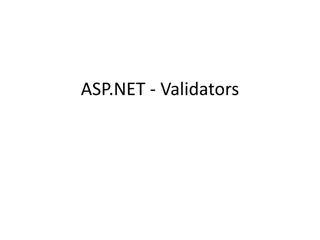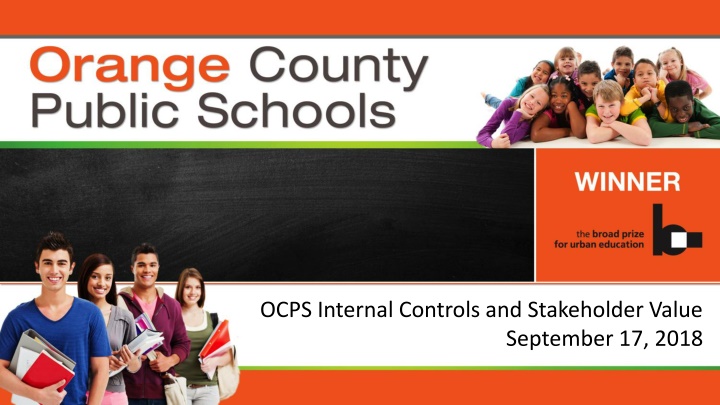
Importance of Internal Controls and Stakeholder Value
Learn why internal controls are crucial for building stakeholder value, how they help avoid surprises, improve efficiency, and ensure compliance with laws and regulations. Explore the key components of internal controls, including control environment, risk assessment, and control activities.
Download Presentation

Please find below an Image/Link to download the presentation.
The content on the website is provided AS IS for your information and personal use only. It may not be sold, licensed, or shared on other websites without obtaining consent from the author. If you encounter any issues during the download, it is possible that the publisher has removed the file from their server.
You are allowed to download the files provided on this website for personal or commercial use, subject to the condition that they are used lawfully. All files are the property of their respective owners.
The content on the website is provided AS IS for your information and personal use only. It may not be sold, licensed, or shared on other websites without obtaining consent from the author.
E N D
Presentation Transcript
OCPS Internal Controls and Stakeholder Value September 17, 2018
Why Are Internal Controls Important? An effective system of internal controls forms one of the keystones necessary to building, maintaining and improving stakeholder value. Effective internal controls help to: Avoid surprises Assure the adequacy of process performance Perform jobs more efficiently and effectively Improve the overall quality of our district Stakeholders expect a good system of internal controls.
Premise Greater Stakeholder Value Surprises = = Fewer Surprises Good Controls
What Are Internal Controls? 1/2 An internal control is defined as: A process, effected by an organization s board, management and other personnel, designed to provide reasonable assurance regarding the achievement of objectives in the following categories: Effectiveness and efficiency of operations Reliability of financial and other reporting Compliance with applicable laws and regulations Internal controls help to ensure the achievement of an objective.
What Are Internal Controls? 2/2 This definition reflects certain fundamental concepts: Internal control is a process. It s a means to an end, not an end in itself. People effect internal control. It s not merely policy manuals and forms, but people at every level of an organization. Internal control can be expected to provide only reasonable assurance, not absolute assurance, to an organization s management. Internal control is geared to the achievement of objectives in one or more specific but overlapping categories. They are: Control Environment Information Risk Assessment Communication Control Activities Monitoring
Control Environment The control environment sets the tone of an organization, influencing the control consciousness of its people. It is the foundation for all other components of internal control, providing discipline and structure. Control environment factors include: Integrity, ethical values and competence of the organization s people Management s philosophy and operating style Methods management assigns authority, responsibility and organizes and develops its people Attention and direction provided by the board How solid are the controls in your work environment?
Risk Assessment Every organization faces a variety of risks from external and internal sources that must be assessed. A precondition to risk assessment is the establishment of objectives, linked at different levels and internally consistent. Risk assessment is the identification and analysis of relevant risks to achievement of objectives, forming a basis for determining how the risks should be managed. Because economic, industry, regulatory and operating conditions will continue to change, mechanisms are needed to identify and deal with the special risks associated with change.
Control Activities Control activities are the policies and procedures that help ensure management directives and School Board Policies are carried out. They help ensure that necessary actions are taken to address risks to the achievement of the district s objectives. Control activities occur throughout the district, at all levels and functions. They include a range of activities as diverse as: Approvals Authorizations Verifications Reconciliations Reviews of operating performance Security of assets Segregation of duties
Information Pertinent information must be identified, captured and communicated in a form and timeframe that enable people to carry out their responsibilities. Information systems produce reports containing operational, financial and compliance-related information that make it possible to run and control the organization. They deal not only with internally generated data, but also information about external events, activities and conditions necessary to informed business decision- making and external reporting. What information does your area need to be successful?
Communication (1/2) All personnel must receive a clear message from top management that control responsibilities must be taken seriously They must understand their own role in the internal control system, as well as how individual activities relate to the work of others
Communication (2/2) They must have a means of communicating significant information upstream There also needs to be effective communication with external parties, such as taxpayers, community members, suppliers, regulators and stakeholders
Monitoring Internal control systems need to be monitored a process that assesses the quality of the system s performance over time. This is accomplished through ongoing monitoring activities, separate evaluations, or a combination of the two. Ongoing monitoring occurs in the course of operations. It includes regular management and supervisory activities and other actions personnel take in performing their duties. The scope and frequency of separate evaluations will depend primarily on an assessment of risks and the effectiveness of ongoing monitoring procedures. Internal control deficiencies should be reported upstream, with serious matters reported to top management and the board.
Preventative Controls Preventative controls focus on preventing errors or exceptions. The following are types of preventative controls: Standard policies and procedures Proper segregation of duties Firewalls and ID specific passwords Authorizations levels/approvals
Detective Controls Detective controls are designed to identify an error or exception after it has occurred. Examples include: Exception reports Reconciliations Periodic audits Authorization levels/approvals
Internal Control Methodology Authorization/Approvals who has the access or authorization to approve transactions? Transaction processing who has the access or authorization to process transactions? Classification (student or financial reporting) Substantiation/Evaluation/Reconciliation what current processes and procedures are in place to validate results? Physical safeguards are all tangible and intangible district assets adequately safeguarded?
Segregation of Duties Segregation of duties separating incompatible duties within a given process. Each process can be broken down into five incompatible duties for which appropriate segregation should exist. They are as follows: Initiation a need is determined and a process is initiated Approval the appropriate individual approves a request Execution the request is processed Recording the financial implications of the transaction are processed Reconciliation the results of a transaction are validated against source documents
Questions to Ask Yourself Are your processes & procedures sufficiently documented? Have you established standard internal rules? Who can and cannot execute transactions? Are all incompatible duties appropriately segregated? Do you really monitor what you are doing? What sort of performance metrics do you use? How does your area compare to similar ones? Is all of your information and knowledge adequately protected?
Summary Internal controls help create stakeholder value They involve people, technology, and processes Individuals at every level can contribute to an efficient & effective control environment
Things to Ponder What major risks are associated with my area? What controls are in place to mitigate those risks? How effective are those controls? How do I know???




